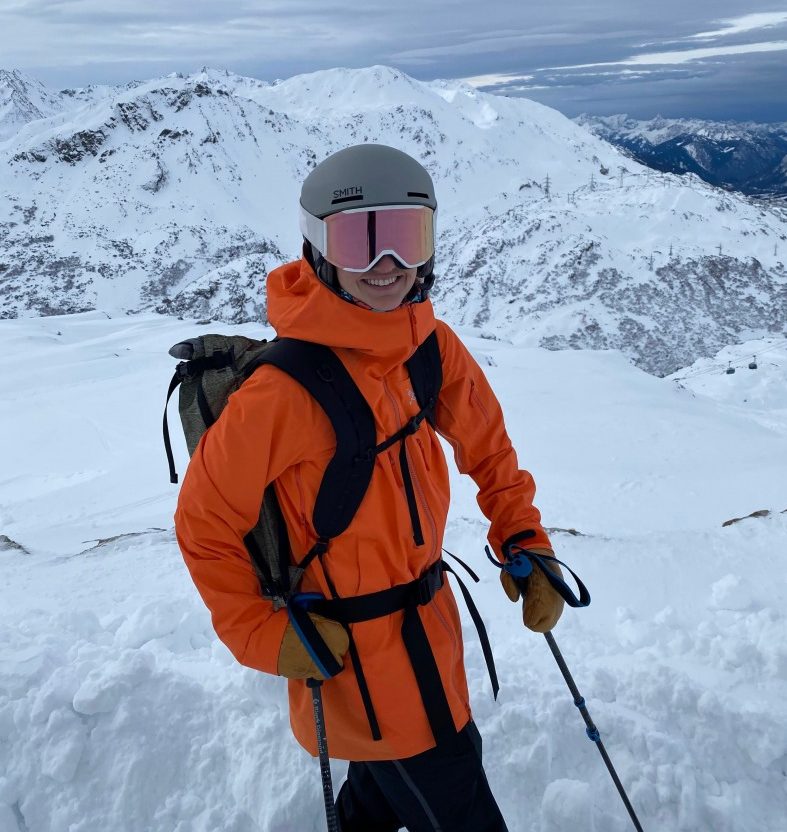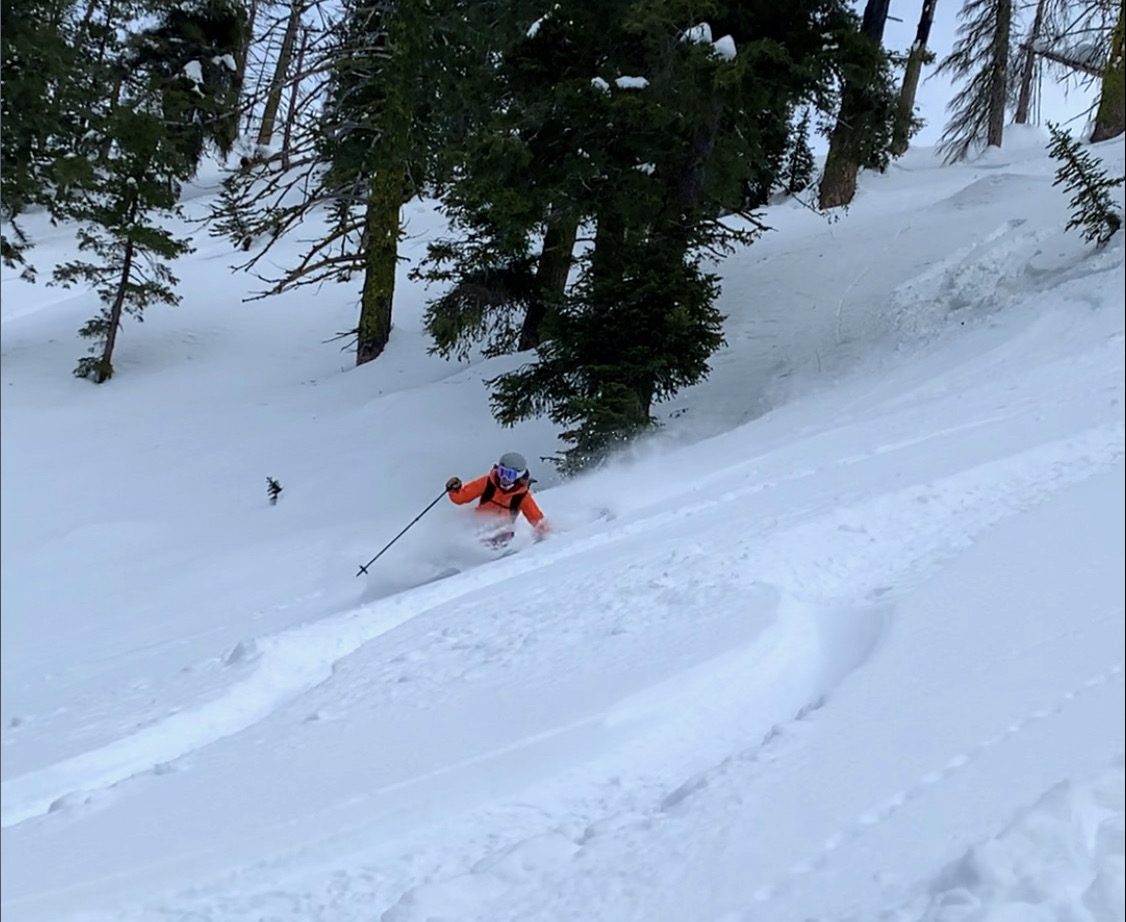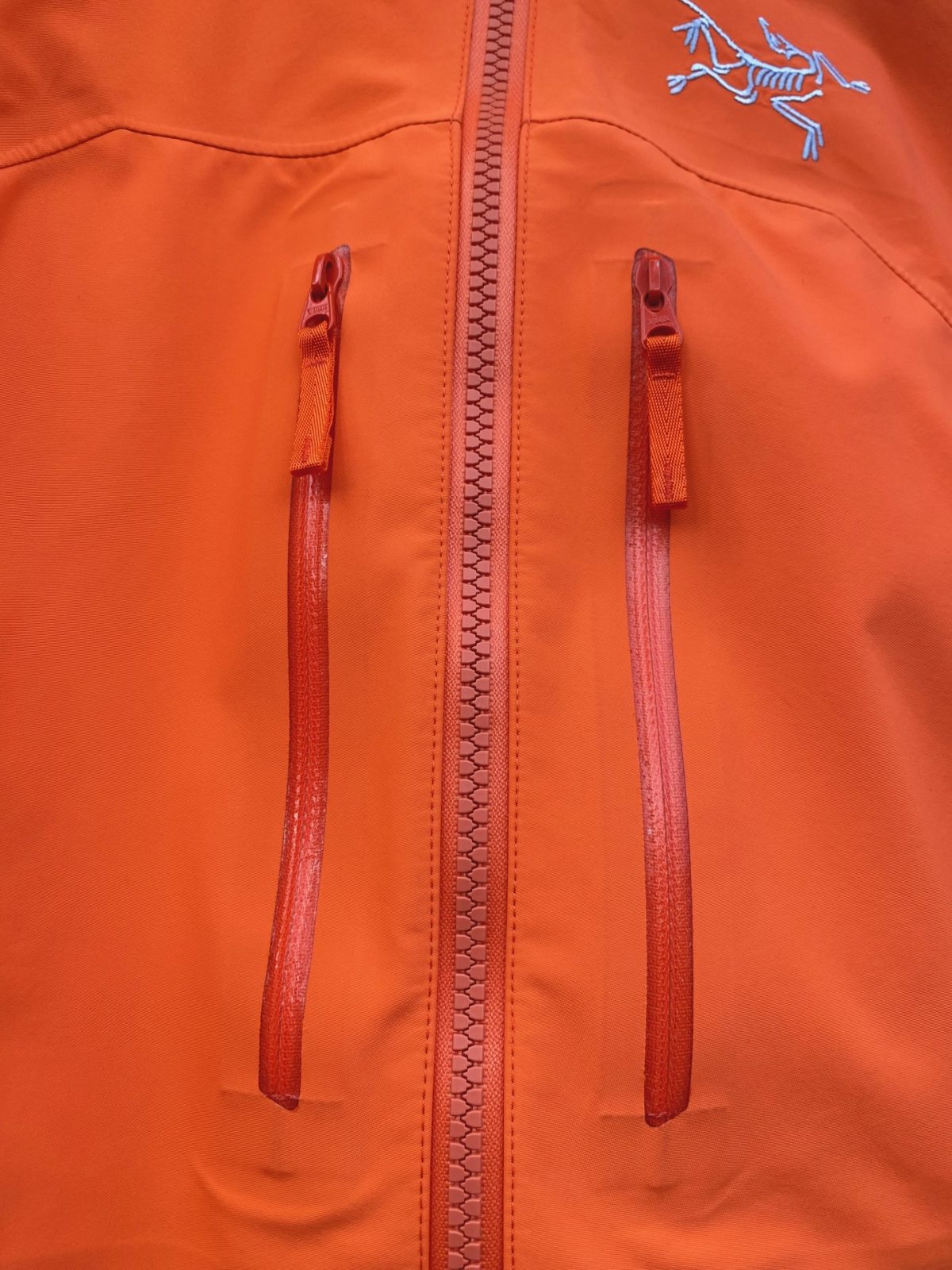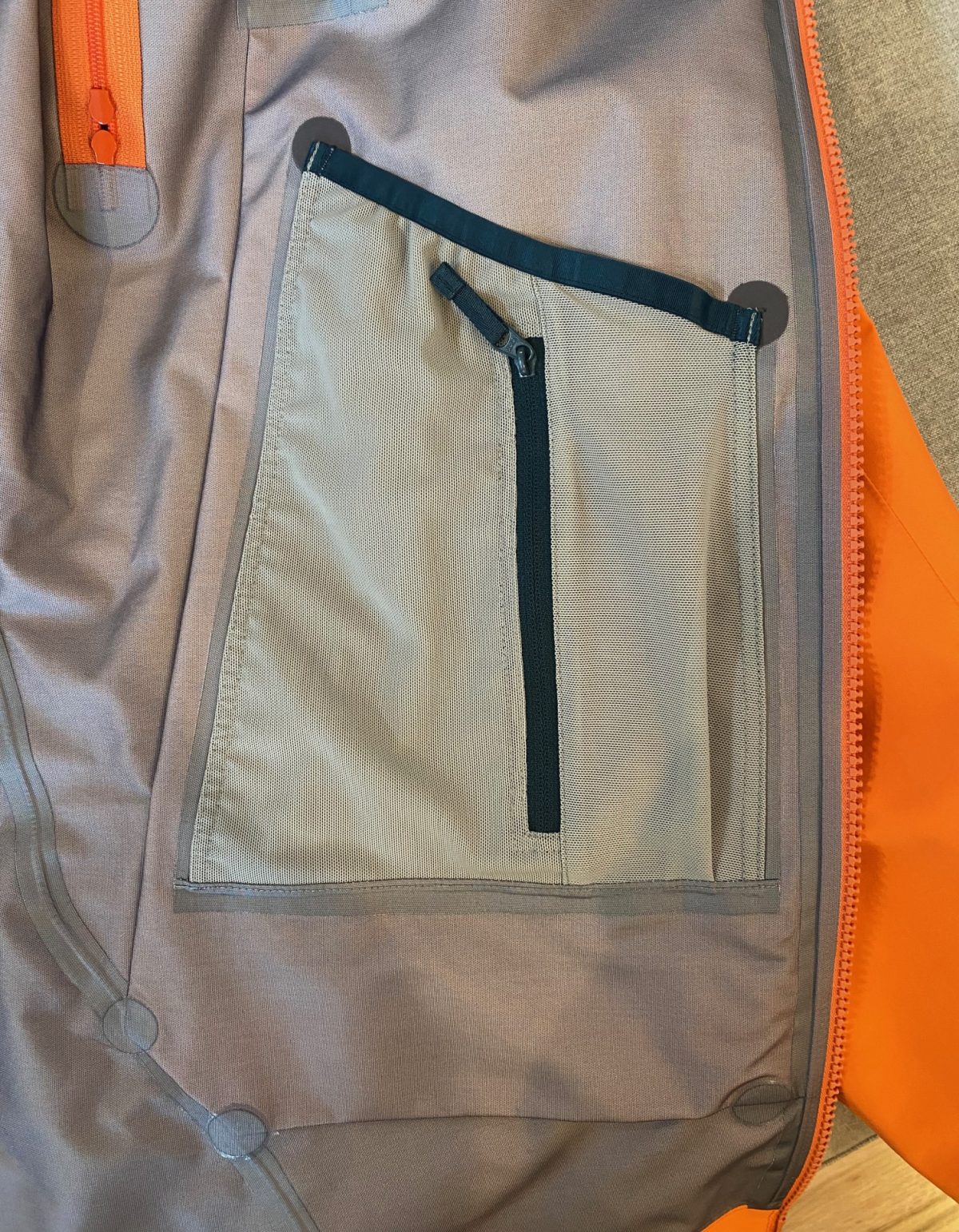
Arc’terx’s women’s Rush jacket features all the goods: plenty of pockets, Gore-Tex fabric, and and a full spectrum feature set for backcountry skiing.
What one expects from an Arc’teryx shell is a high-quality build, an ample feature set, durability, and, oh yeah, the $$. The women’s Rush jacket is a backcountry skiing dream with some style to boot.
What a winter in the Pacific Northwest for gear testing: since our first snowfall in November, we have seen deep, cold powder, wet and sticky snow, heavy winds, and a lot of rain. While this is my third winter living in Central Oregon—and none of this should surprise me—I am always bewildered when we spend Thanksgiving skiing, pow, and Christmas sheltering from the rain.
During this time, I tested the Arc’teryx Women’s Rush Jacket, a light and durable GORE-TEX shell designed for backcountry and freeride skiing. I have very few critiques on this jacket and was impressed with its performance in all conditions. I took this jacket on uphill missions here in Central Oregon, downhill skiing in the Austrian Alps, and on a yurt trip in Wallowas. The old US Postal saying goes like this: “Neither snow, rain, heat, nor gloom of night stays these couriers from the swift completion of their appointed rounds.” There was no mail delivery on my part, but I’m confident the Rush jacket would be handy in nasty weather mail delivery situations.

The performance metric is high and the overall weight, at 540g works to my favor — especially when the snow is deep.
Weight versus Performance
My initial impression, and without knowing any technical specifications, I noted that the Arc’teryx Rush Jacket is light. Compared to the other technical shells in my closet, it feels significantly lighter, thinner, and generally more supple than its counterparts. The shell weighs just over a pound at 540 grams and packs up easily and compactly in backcountry packs. It is noiseless, soft, and generally a no-brainer when adding it to the packing list.
Despite its weight, the Arc’teryx Rush jacket packs a big punch. The jacket is built with three-layer GORE-TEX C-KNIT Backer technology, which is GORE-TEX’s proprietary fabric that promises wind and waterproof performance with less weight and bulk. Think less crinkly than Gore-Tex Pro pieces.
Living up to its promise, I found that jacket extremely resilient, keeping me dry and warm during freezing rain, sleet, and windstorms. Throwing the jacket on atop a windy skintrack, I found the ambient temperature around my core could rise ten degrees. Not to be outdone by its durability, the Arc’teryx Rush is also quite breathable (another by-product of the GORE-TEX C-KNIT technology, which is marketed as roughly 15 percent more breathable than Gore-Tex Pro). While it is rarely my preference to walk uphill in a shell, a poorly timed outing on a very wet December afternoon made it necessary. The Arc’teryx Rush was light, comfortable, and breathable during my skin. I hardly noticed I was wearing it. (On the contrary, my friends did notice—I was much drier than the rest of the group.)
Most recently, I wore this jacket almost nonstop during a four-day yurt trip in the Wallowas. While it performed excellently and as expected, I did notice the jacket began to show its wear in the form of small stains and marks on the face fabric, which is likely the result of normal wear and tear. As the jacket was frequently stuffed and un-stuffed in my pack, I noticed it held wrinkles a bit longer (as you can see in some of these photos). I expect a darker color of this jacket would hide these very minor and nitpicky imperfections.

Pockets and more pockets. The chest area offers two waterproofed zippered pockets with plenty of volume for accessories.

Shown here is the left interior drop pocket with has ample room for smaller sized skins. This pocket also includes a small zip pocket as well. The right side drop pocket does not include the zip pocket.
Pockets and Other Features
The women’s Rush jacket has five exterior zippered and taped (i.e., waterproof) pockets: two hand pockets, two chest pockets, and a sleeve pocket for an RFID ski pass. The pockets are deep, easy to access, and thoughtfully positioned. As an organized and type-A skier, I happily used all five pockets but did not require any more.
Finally, the Rush Jacket also includes two interior mesh pockets without zippers, which can be used to store skins, extra goggles and/or lenses, or pocket pizza (my preference).
The jacket’s hood is helmet-compatible and adjustable. It is easy to pull up and down, even using bulky mittens and fighting the wind while providing full coverage, and does not impact visibility.
The Arc’teryx Rush Jacket also contains a two-way front zipper and waterproof “pit” zippers to dump heat and increase breathability. These features have become standard on most technical shells and are a solid features.
Not present? A powder skirt (thank goodness). Others may disagree, but I find powder skirts add unnecessary weight, bulk, and annoyance. I was happy to see Arc’teryx chose to eliminate this from the design.

As a note for readers, I am 5’3 and about 120 pounds, with very narrow shoulders. I prefer my outdoor gear to fit slightly oversized. I wear a size small (S) in this jacket, which fits perfectly.
Size and Fit
As a note for readers, I am 5’3 and about 120 pounds, with very narrow shoulders. I prefer my outdoor gear to fit slightly oversized. I wear a size small (S) in this jacket, which fits perfectly. The Arc’teryx website estimates my size as an extra small (XS), but I was happy with the extra room in this jacket, which easily allowed for my base and mid-layers, of which there are many.
The Arc’teryx Rush Jacket is also quite a bit longer than other technical shells I have worn (73 cm back length), which I believe further enhances its performance in terms of wind and waterproofness. Nobody likes a soggy bottom. I worried the longer shell may impede my range of motion, especially walking uphill, but I did not have any issues, despite the jacket running a bit longer in the back than I am used to.

The women’s Rush jacket has a longer hem in the rear for better weather protection. If you prefer a shorter hem line, you can tighten a draw cord at the waist.
Without a doubt, Arc’teryx gear is expensive. Really expensive. But their gear just looks—well, err—cool. While I normally gravitate toward more subdued color choices, I rocked the Rush Jacket in a bright orange (“Phenom”), which I ended up loving. The color is rich, saturated, and stands out in a sea of blue, green, and black jackets. It looks sleek in photos and makes me easy to spot in low visibility. The jacket also has a cool contrast paneling on the back. Early in the testing process, another skier chased me down on the skin track to ask about the brand, model number, and jacket color. The interaction made my day, and I probably skied a little bit better because of it. Is a confidence boost worth $700? That’s up to you.
Bottom Line
With the Arc’teryx Rush Jacket, an old Danish saying holds true: “There is no such thing as bad weather, only unsuitable clothing.”
The Rush Jacket is ultimately the best shell I have ever used. Which means this is suitable clothing for really bad weather. It has taken front-and-center in my closet, even compared to my original daily driver, the Arc’teryx Sentinel AR, which now feels too heavy and bulky. The Rush Jacket is versatile, durable, and breathable. It suits a wide variety of conditions and offers unmatched wind-and-waterproof performance. Like other Arc’teryx products, it looks and feels like a high-caliber, sleek, and generally good-looking jacket. If you are in a position to splurge on a high-quality shell, I recommend the Arc’teryx Women’s Rush Jacket without reservation.
Arc’teryx Women’s Rush Jacket Specs
Fabric: 80D 3L GORE-TEX fabric with GORE C-KNIT™ backer technology.
Sizing: Arc’teryx calls this a “regular” fit.
Weight: 540g
Price: $700
Shop for the women’s Arc’teryx Rush Jacket.
Shop for the men’s Arc’teryx Rush Jacket.
A Midwesterner at heart, Jordan grew up skiing in the cold and icy “mountains” of northern Michigan; experts say this is where she developed her affinity for puffy coats. Not satisfied with the terrain offered by her local ski hills, Jordan moved west to Colorado and subsequently to Bend, Oregon, where she could be even closer to the outdoors. Although she is a healthcare consultant by day, her passions lie with the mountains. Jordan was accidentally introduced to backcountry skiing by her husband Jozef, who regrets suggesting a sport which requires him to walk uphill all day. On any given weekend, they can both be found on skis.
